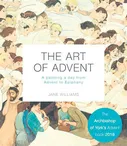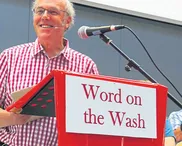The title of this exhibition derives from the huge triptych painted in the last decade of John Martin’s life, which became his most famous achievement — visions of the ‘The Last Judgment’, ‘The Great Day of His Wrath’ and ‘The Plains of Heaven’.
Martin, a younger contemporary of Turner and Constable, was born in 1789, the year of the French Revolution, in Haydon Bridge, near Hexham. Much of the awe-inspiring scenery in his work reflects the wildness of the Northumbrian crags, where man is dwarfed by the elements, as well as by the iron furnaces of the Tyne Valley — a sight completely new in the early industrial revolution.
Unusual family
Although the Martins were poor, they were a highly unusual family. John’s mother, Isabella, claimed descent from the Protestant martyr Nicholas Ridley (who appears among the righteous in ‘The Last Judgment’). Of his three brothers, William, the eldest, became an inventor, often making financial demands on John for his many projects. Richard, a poet and soldier, fought at Waterloo, while Jonathan became a highly eccentric preacher who in 1829 was put on trial for setting fire to the choir of York Minster, and declared insane.






